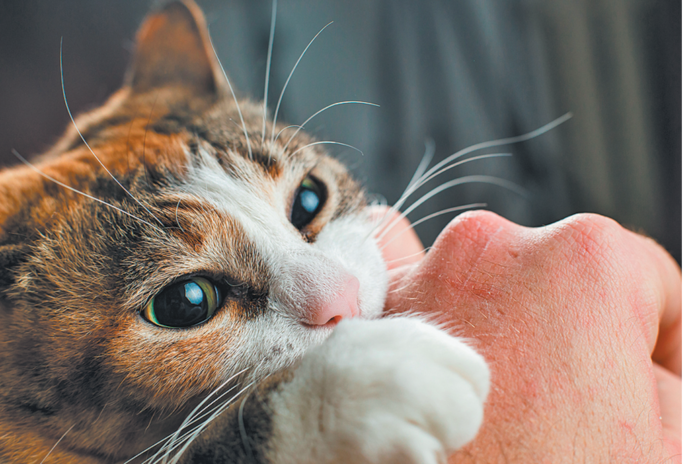Dogs have powerful teeth and jaws and are responsible for an estimated 85 percent of bites from pets, causing more human deaths than any other household animal. But the 15 percent of bites that come from cats often have serious consequences, too, including infections that penetrate deeply and become difficult to treat. Some even cause bodily damage that requires hospitalization. While children ages 5 through 9 are most frequently the victims of dog bites, middle-aged women are the most common victims of cat bites, according to a Mayo Clinic study. Presumably, petting sessions gone awry are what lead to the attacks.
Feline bites tend to occur on the hand, a particularly vulnerable part of our anatomy. Our hands have a complicated network of tendons, joints, and nerves required for all of their fine motor movements, so when they are compromised by a serious bite, tending to the wound can become quite involved.
Why feline teeth are so dangerous
While dogs have comparatively large teeth, a cat’s sharp, narrow fangs can make their way far down into our body tissue when they puncture the skin. That means the bacteria in the feline mouth end up jabbed much further beneath the surface than a dog’s might. The consequence is a much greater risk of infection and one that is harder to treat; the more deeply an infection has penetrated, the more difficult it is for antibiotics to do their job of routing out the offending microorganisms.
That, in fact, is what can lead to hospital stays. Antibiotics given by mouth aren’t always adequate, so the victim of a cat bite might have to remain in the hospital for several days in order to receive a particularly powerful dose of antibiotics via an intravenous drip. In the Mayo Clinic study, published several years ago in the Journal of Hand Surgery, 30 percent of people bitten by cats required a hospital stay. Almost one in five of the cat bite victims had to be admitted to the hospital immediately. Of those sent home with oral antibiotics, almost 15 percent subsequently had to be hospitalized because the oral treatment wasn’t working.
The need for intravenous antibiotics wasn’t the only reason cat bite victims ended up in the hospital. A number of them had to have their infections surgically flushed. Some even had to have infected tissue surgically removed and also required reconstructive surgery. A number of people needed more than one operation. Hospital stays lasted for several days, on average. Sometimes, even with an operation, there was a loss of joint mobility.
Keep in mind that a bite wound from a cat doesn’t have to look like a bloody mess with lots of shredded tissue to be serious. Just a pinprick of a bite can trigger a cascade of serious health consequences. Anyone bitten by a cat, even if it doesn’t seem serious, should consider going to the doctor for a consult and, possibly, a dose of antibiotics. If the skin is inflamed or there’s swelling, an immediate visit to a physician is in order.
The best way to avoid getting bitten by a cat while petting one is to leave him wanting more. Stop before you see any sign whatsoever that the cat has had his fill. Such signs including a swishing tail, ears turned so that the openings point to the side, or simply a sense that your pet is becoming restless.
Instead, stroke your cat just a little and then stop. If he wants you to continue, he’ll let you know, perhaps by bumping his head against your hand. In such instances, pet for a little bit again, and then stop once more to see if he wants the session to continue. Always leave it to him to initiate further interaction.
It’s also important never to leave a cat alone with an infant. Felines and infants simply don’t understand each other, and a cat can do substantial damage to — and through — a baby’s soft skin in the blink of an eye.
Older children, of course, should be taught never to initiate rough or raucous play with a cat. It’s best, in fact, if older children do not approach a cat but instead let the cat approach them.





Very important article! Everyone should read this!